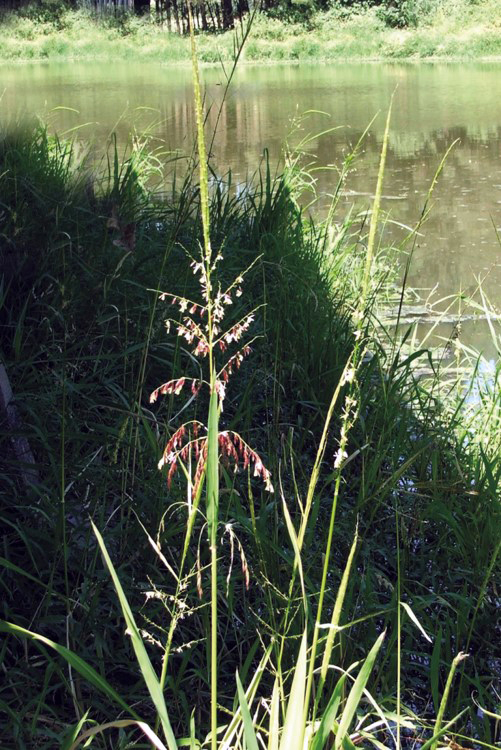 The Wonderful World of Wild Rice
The Wonderful World of Wild Rice
For centuries, Native Americans in the northern and eastern United States depended on wild rice for 25% of their staple diet. Known as “Manomin,” which means “good berry”, wild rice was regarded as “food from the gods”. Other names associated with wild rice include Indian rice, squaw rice, water oats, marsh oats, and blackbird oats (Oelke, 1982). Wild rice is native to the northern and eastern seaboard of the United States, Canada, and southeastern U.S. coastal areas, as well as a small portion of Texas. The picture shows this beautiful hardy plant.
Early players in the production of wild rice
Wild rice was originally harvested in canoes; it is still a tradition today among some Indian tribes. The slender stems were bent over the inside of the canoe; a stick or flail was used to strike the plant, causing the grain to fall into the bottom of the boat. The grain was spread out in the sun to dry or parched over fires. After removing the hulls by threshing or hand rubbing, the wild rice was stored for future use. The earliest commercial ventures are recorded around the late 1800s. The popularity of wild rice led to improvements in equipment for harvesting and processing. In the first half of the 1900s, the first processing plants were built in Minnesota. That state became the hub of the wild rice industry. Today Minnesota has more acreage in wild rice than any other state in the US. They have an aggressive scientific research team looking for ways to improve wild rice, marketing, nutritional data, and meeting the needs of the wild rice growers.
The Northwest’s contribution to wildlife habitat and wild rice production
IDAHO
The first wild rice in Idaho was introduced by duck hunters in the mid 1940s, to enhance waterfowl habitat in Benewah Lake, surrounding rivers and marshes. The project was so successful that the plant choked boat channels and dock areas. The Idaho Department of Parks and Recreation was afraid it would overrun its lakes and sought bidders to harvest it. In 1982, St. Maries Wild Rice Co. was formed to harvest and process the Idaho wild rice. Each year, the Idaho Parks Dept. receives income from the harvest at Benewah Lake. That income is used to continue to restore and enhance the waterfowl habitat in Heyburn State Park where the lake is located. Dry land crops don’t do well in St. Maries because the land is so wet. There is little that farmers can grow besides hay. Wild rice offers a cash crop for local landowners, and a haven for the geese, ducks, herons and swans. Wild rice is valuable for shore birds and waterfowl as well as fur bearing animals, even deer, elk and moose. The plants are used as a brooding place for young birds. Everyone wins when wild rice is harvested in Idaho. Fishermen are benefiting by improved water access and there has been an increase in waterfowl using the areas where wild rice is grown and harvested.
OREGON
A grain specialist at Oregon State University, who was originally from Minnesota, tossed out a handful of wild rice seed in his backyard pond to see if it would grow in Oregon’s climate. From that experiment, an article was published that caught the eye of several people who were interested in enhancing wildlife habitat. Two of those people were Larry and his late father, Jim Payne. In 1990s the first few grains of wild rice were planted in the fertile Willamette Valley in Marion, Linn and Lane Counties. That same year, Ankeny Lakes Wild Rice Company was formed. Six years later Ankeny Lakes incorporated with the purchase of St. Maries Wild Rice Co. After a series of flooding in the processing plant at St. Maries, it was decided an area high and dry would be more fitting for processing. Ankeny Lakes Wild Rice Company purchased St. Maries Wild Rice Company in 1996. The processing, and packaging equipment was moved to our farm just south of Salem, Oregon. That is the year Ankeny Lakes and St. Maries were incorporated as Wild & Ricey Northwest, Inc. Currently there are several growers in the State of Oregon.
The West Coast Connection
CALIFORNIA
In the mid 1960s, rice growers in the Sacramento Valley began experimenting with wild rice plants. They already had the equipment for white rice; the paddies were built so the costs were minimal to shift to wild rice. In Northern California and the Sacramento Valley, growers plant and harvest more than 6,500 acres of wild rice. California now grows more cultivated wild rice than the other North American regions.
Neighbors to the North
As in the United States, wild rice is native to the Canadian Eastern seaboard. Saskatchewan introduced wild rice back in the 1930s for waterfowl feed. Alberta is the most recent Province to introduce wild rice for production. The Canadian government controls the leasing agreements, planting and harvesting of wild rice in the northern lakes of Canada. Canada is a major growing region for the big beautiful organic lake wild rice.